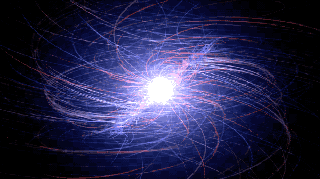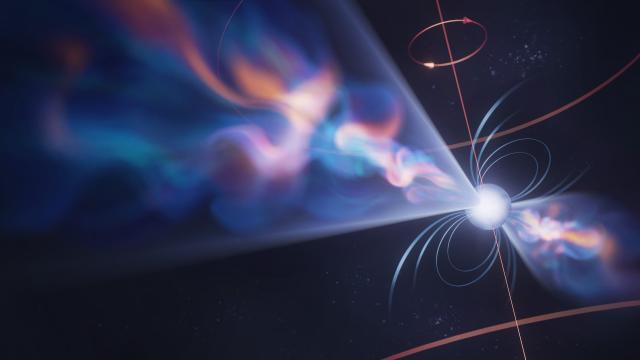Plasma could be wrangled to collide photons and yield matter, according to physicists who ran simulations to explore the practical applications of a world-famous equation.
The equation at work here is Einstein’s E = mc^2, which establishes a relationship between energy and mass; specifically, the equation holds that energy and mass are equivalent when the latter is multiplied by the speed of light, squared.
A team led by scientists at Osaka University and UC San Diego recently simulated the collisions of photons using lasers; their results suggest that the collisions would yield pairs of electrons and positrons. The positrons—the antiparticle of the electron—could then be accelerated by the laser’s electric field to produce a positron beam. Their results are published in Physical Review Letters.
“We feel that our proposal is experimentally feasible, and we look forward to real-world implementation,” said Alexey Arefiev, a physicist at UC San Diego and co-author of the paper, in a University of Osaka release.
The experimental set-up is possible, the release added, at laser intensities that currently exist. The researchers used simulations to test potential experimental set-ups and found a compelling one. The photon-photon collider uses the Breit-Wheeler process to produce matter, meaning it annihilates gamma-rays to produce electron-positron pairs.
Some extreme physics—places where stars are born and die, and where time stands still—exist in the distant reaches of the cosmos. In 2021, a different team of researchers suggested that the cores of neutron stars, extremely dense end-stages of stellar life, could be a venue for a similar dynamic, by which dark matter particles could convert into photons.
Spinning neutron stars are called pulsars, and their high-energy environment is where matter may be generated from light. Pulsars can spin thousands of times per second, emit gamma-rays, and have some of the strongest-known magnetic fields, according to NASA.

Pulsars are also useful tools for measuring gravitational waves in space. Earlier this year, five different pulsar timing array collaborations found what they suspect is the first look at the gravitational wave background—basically, the continuous murmurs of gravitational waves that ripple spacetime on a nearly imperceptible level.
Though it is difficult to observe the ins-and-outs of pulsars from afar, physicists can attempt to simulate them.
“This research shows a potential way to explore the mysteries of the universe in a laboratory setting,” said Vyacheslav Lukin, a program director at the National Science Foundation, which supported the recent research. “The future possibilities at today’s and tomorrow’s high-power laser facilities just became even more intriguing.”
The experiment could provide a way to peer into the universe’s composition, by bringing some far-out physics much closer to home. But for that to happen, an experiment will actually need to be built.
More: This Dark Matter Radio Could Tune Into New Physics
